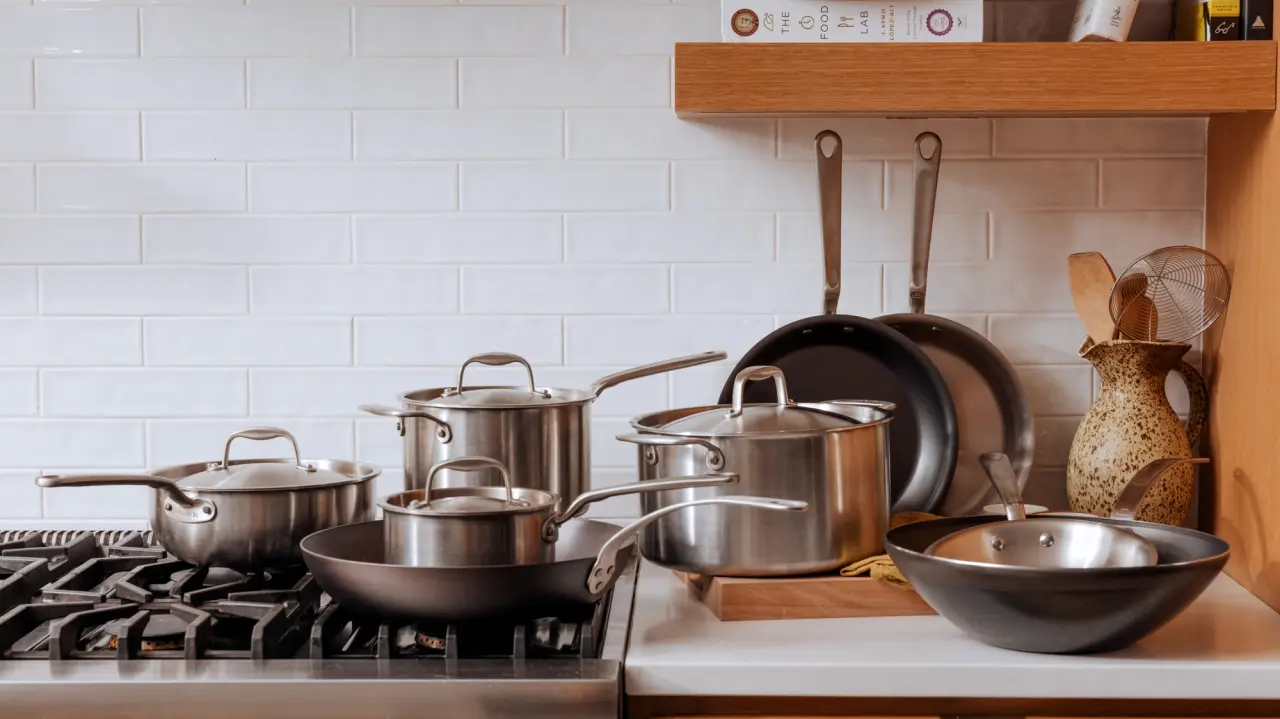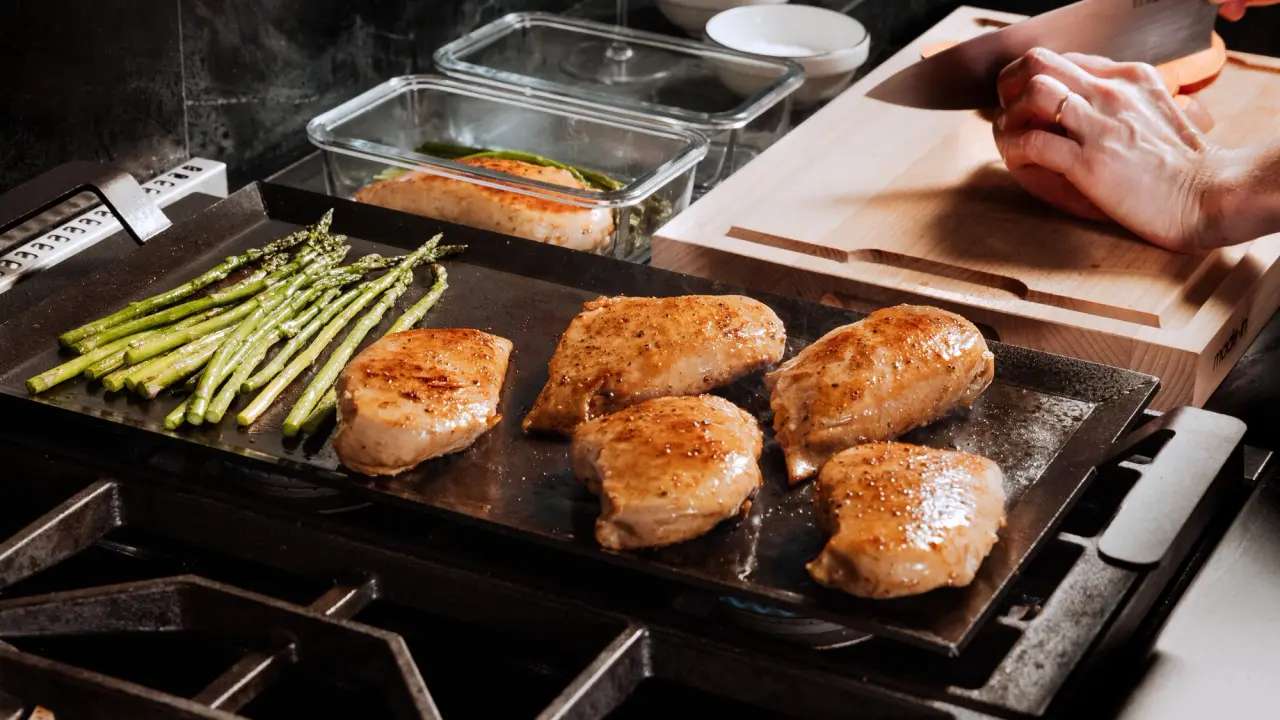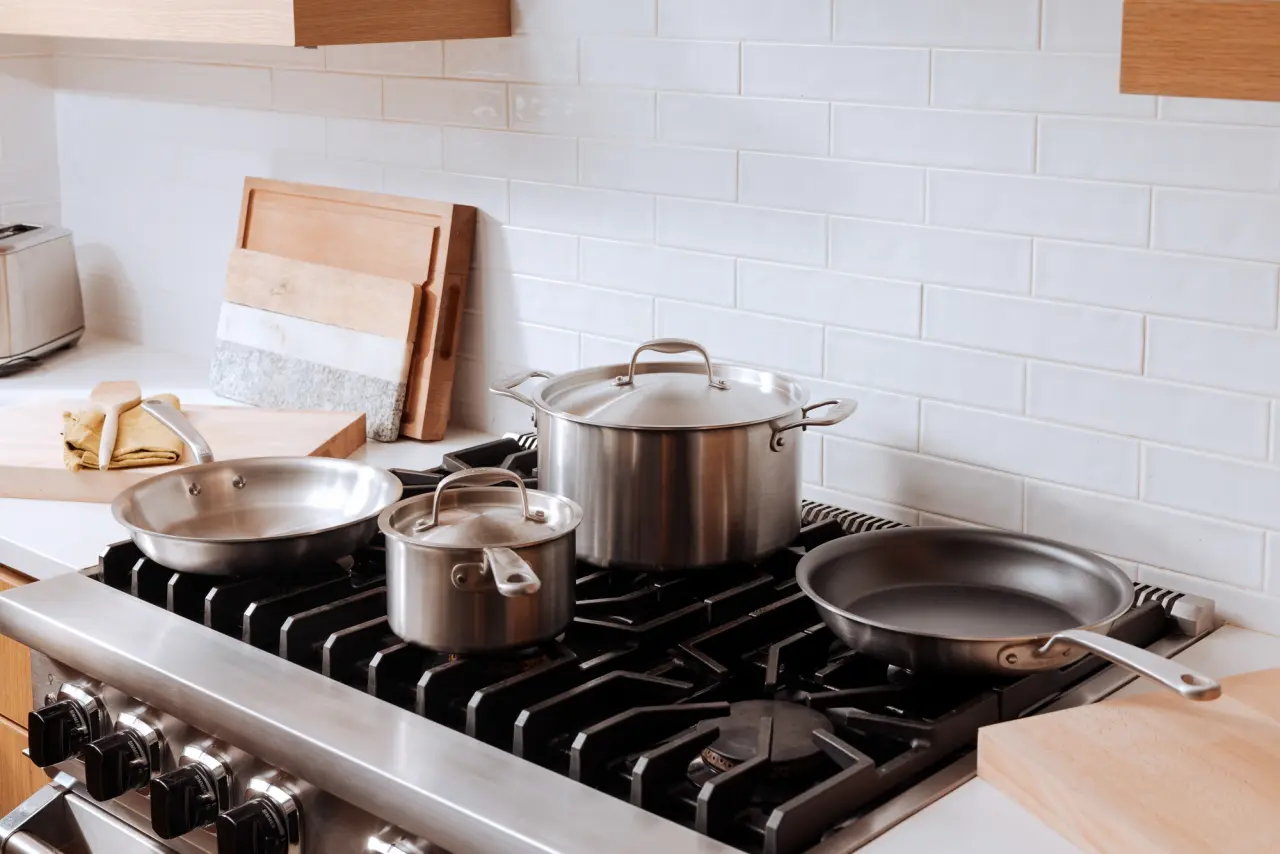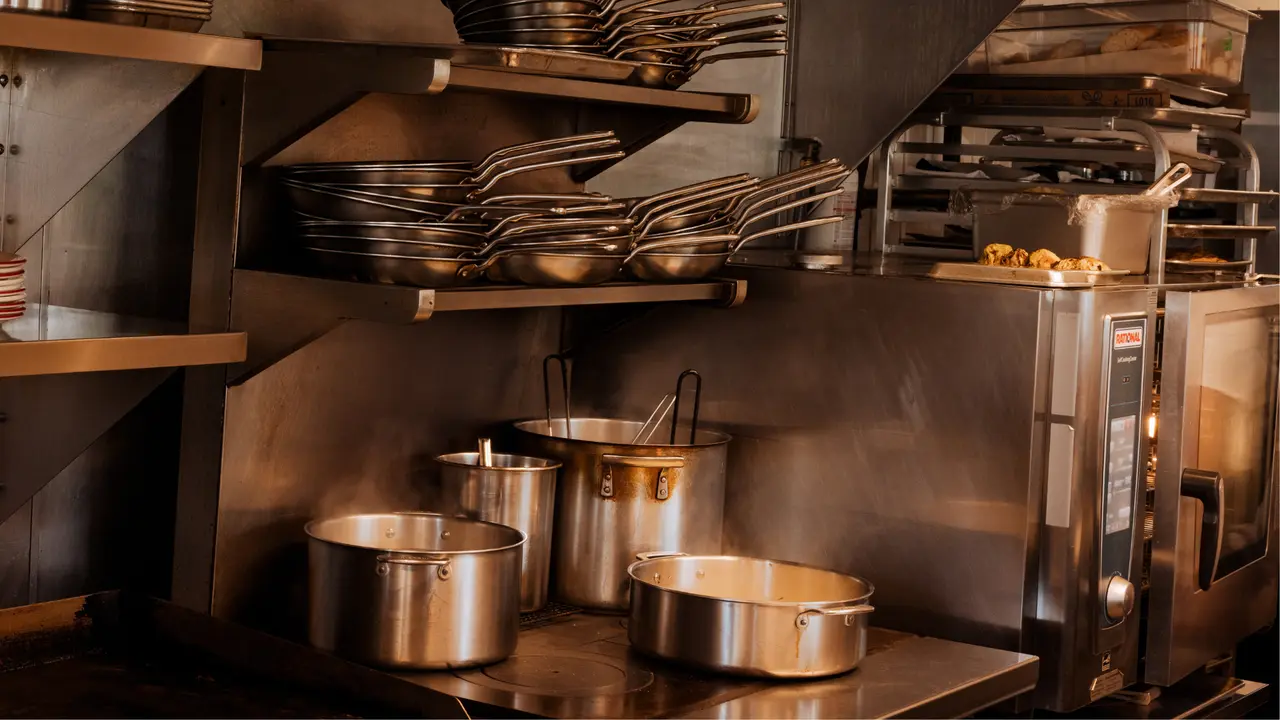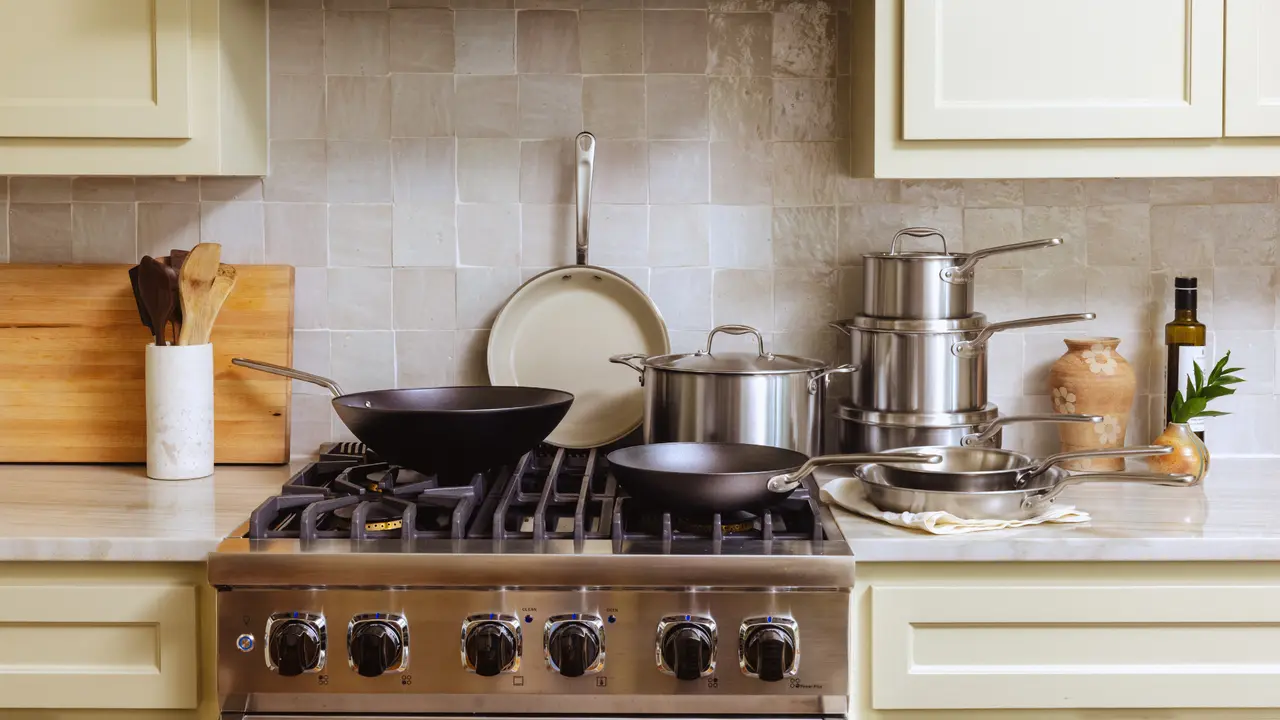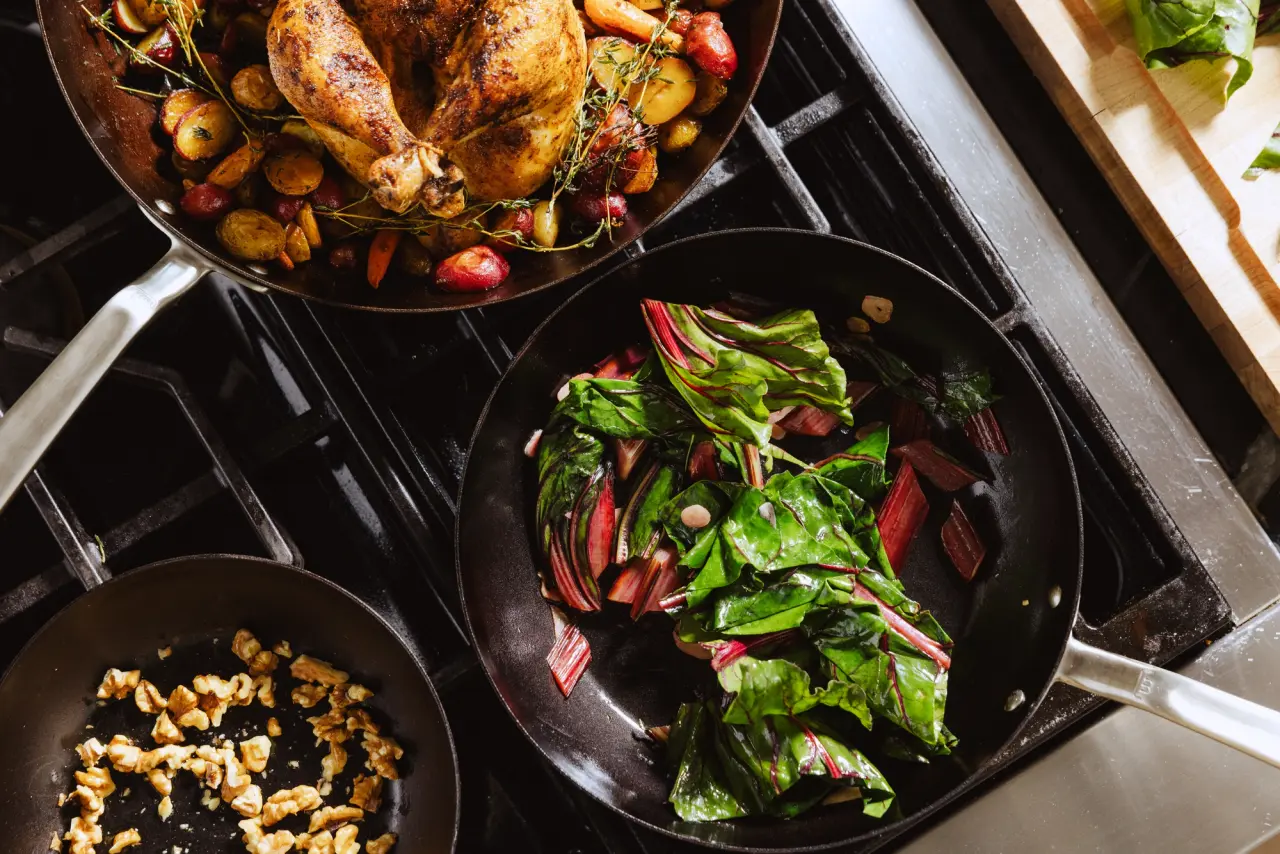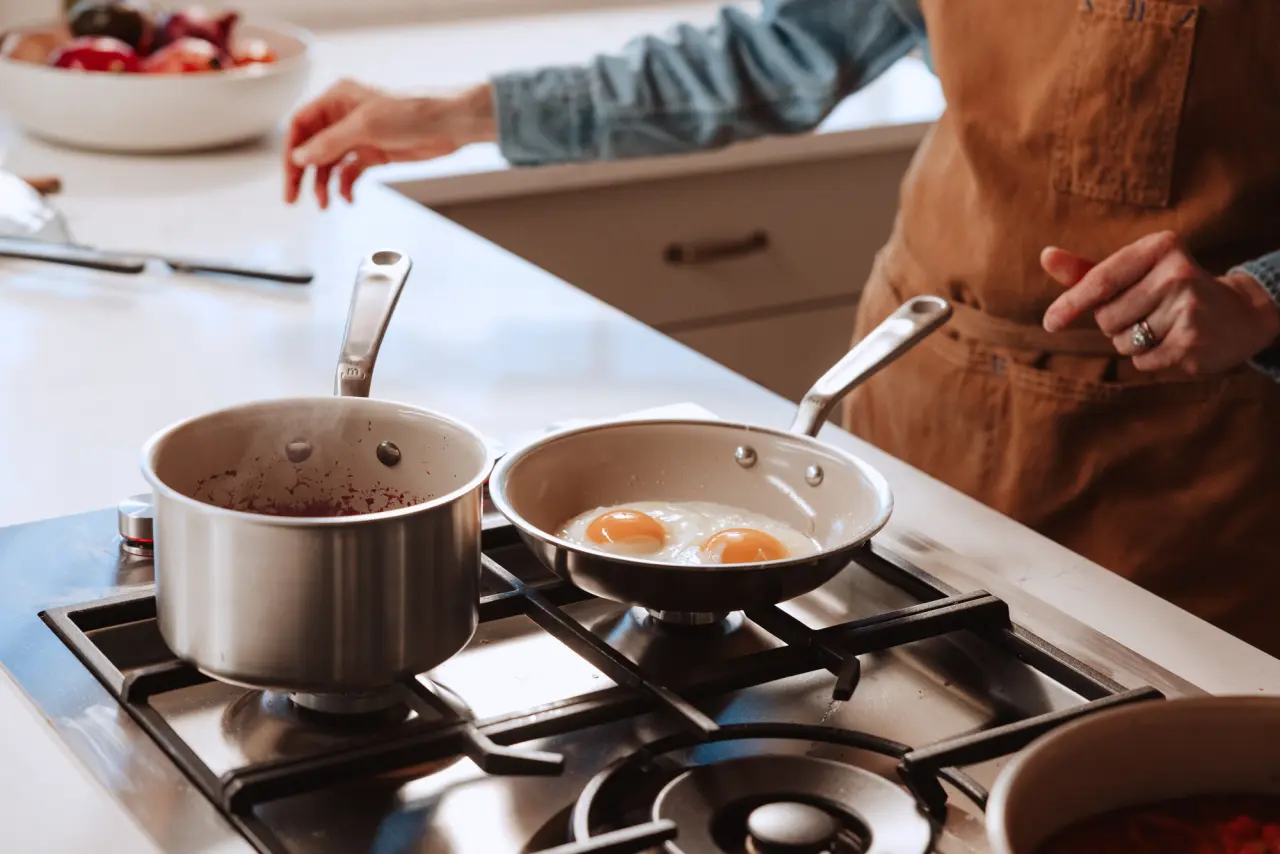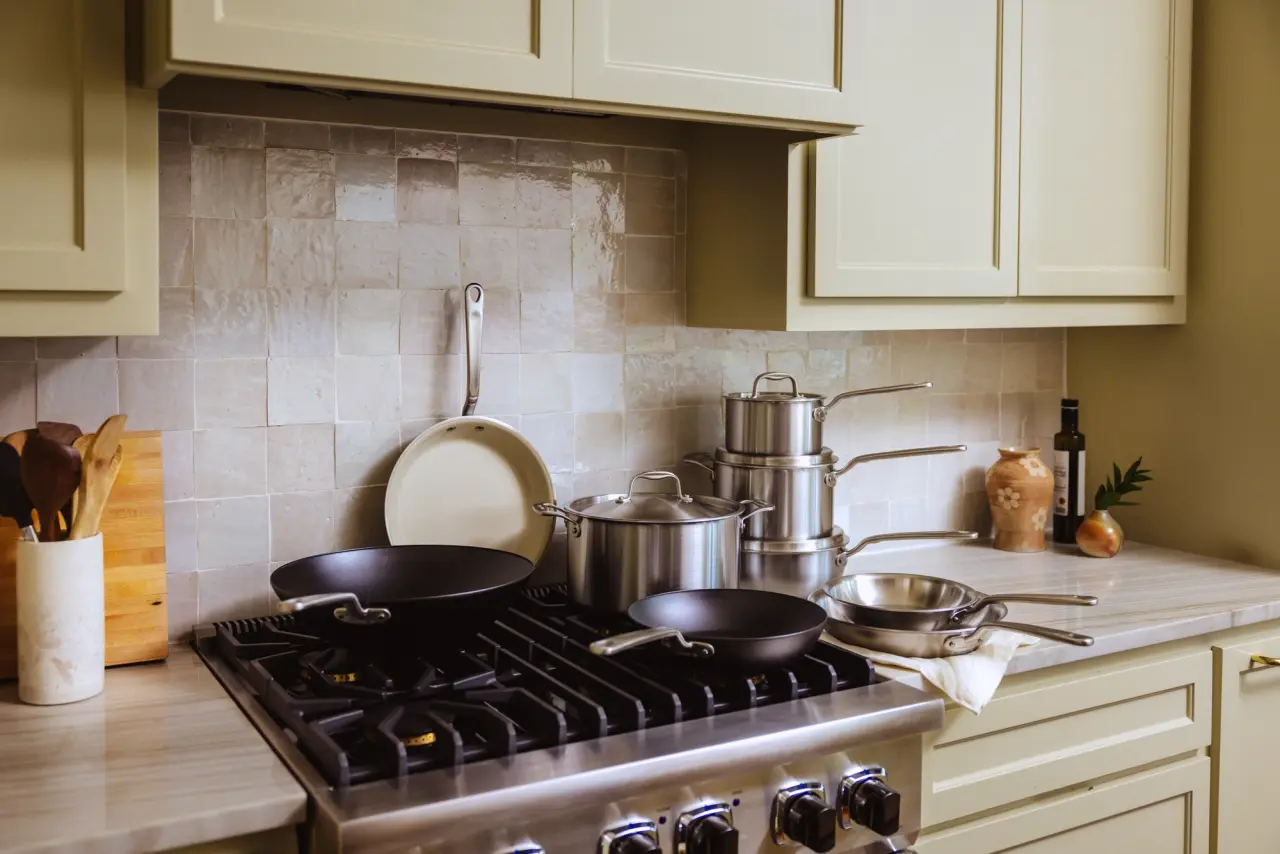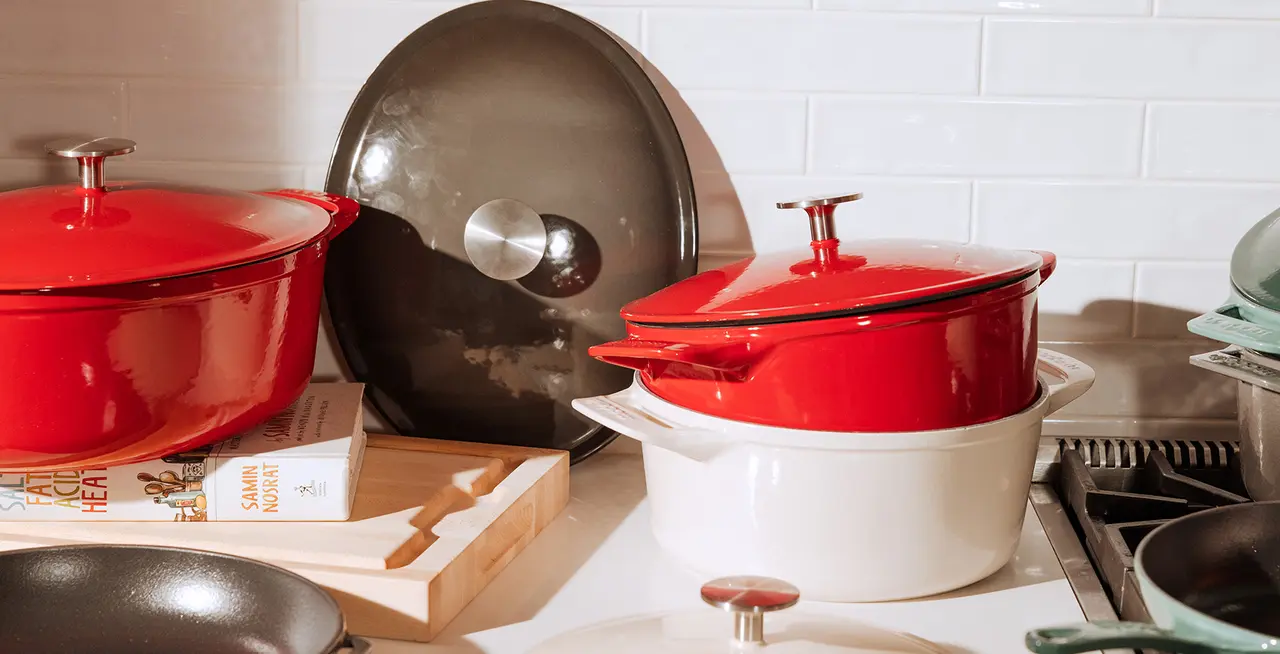If you’ve spent time in a professional kitchen or a well-stocked home kitchen, chances are you’ve seen both carbon steel and stainless cookware. Adored by both home and professional around the world, these pans can be used to cook just about anything.
If you're in the market for a new pan or cookware set, you may wonder how they differ and if you can use one over the other. Luckily, most everything about these pans, from their materials to their uses, are actually quite different. Read on for a break down of the major differences between carbon steel and stainless cookware.
What Is Carbon Steel Cookware?

First used in French kitchens, carbon steel cookware is commonly thought of a hybrid of the best parts of cast Iron and stainless steel cookware. It has the same makeup as cast iron (that is, carbon and iron—ours is 99% iron, 1% carbon) without the weight commonly associated with cast iron skillets, plus the heat retention and control stainless steel is renowned for.
Much like cast iron, carbon steel cookware must be seasoned prior to its first use. A non stick coating, or patina, must be built up over time as this pan is not non stick out of the box—unless you opt for a preseasoned pan, that is.
Advantages of Carbon Steel
Carbon steel is beloved in kitchens around the world for a variety of reasons.
- Durability: Since our Carbon Steel Cookware is made from a heavy-duty blend of carbon and iron, it can withstand high temperatures, making it the perfect pan for outdoor cooking over a grill or campfire as well as indoor on the stove. This construction also means with the proper care, a carbon steel pan can last for generations.
- Light Weight: Unlike its cast iron counterpart, carbon steel weighs much less (by almost half), allowing for more maneuverability and comfort while cooking.
- Temperature Response: One reason professional chefs love carbon steel is how quickly it responds to changes in heat. Unlike cast iron (which holds onto heat for much longer), you can seamlessly shift from searing a steak to lightly browning butter without worrying about anything burning.
- Versatility: Whether you’re cooking on the stove, in the oven, or a little bit of both, carbon steel is up for the job—and oven-safe up to 1200F, and induction-compatible. You can cook just about anything in carbon steel once it’s been properly seasoned, but do note that it is a reactive material—meaning it's best to avoid super acidic ingredients like tomatoes or wine as they can strip the seasoning .
Carbon Steel Considerations
Much like any piece of cookware, there are a few considerations to keep in mind while using carbon steel.
- Avoid Certain Foods: Some acidic foods, such as citrus, tomatoes, vinegar, and wine, can strip the seasoning of your carbon steel cookware. This doesn’t damage your pan, and just means you need to re-season your pan or cook with fattier foods to build the seasoning back up afterward.
- Care Requirements: Like the rest of our cookware, we highly discourage washing carbon steel in the dishwasher and recommend hand-washing only. Since carbon steel is not corrosion resistant, we recommend cleaning with water and drying it completely over low on the stove to avoid rust. For tougher messes, check out this cleaning guide.
- Needs Seasoning: Good things take time, like building up a non stick coating on carbon steel cookware. This means that you may want to wait to scramble eggs or cook flaky fish on your carbon steel pan until after it's been seasoned and has had a chance to build up a patina.
What Is Stainless Steel Cookware?

Stainless steel cookware is regarded for its ability to cook at high temperatures, achieve an excellent sear and sauté, and look good while doing it. Our 5-ply Stainless Clad has outstanding heat control that allows you to cook practically anything to perfection.
5-ply cookware consists of (you guessed it) five different layers of four different metals throughout the body of the pan. This helps with even, consistent heating throughout the pan, while still responding quickly to changes in temperature.
Made In's Stainless Clad Cookware consists of outer layers of stainless steel ensuring induction compatibility, with inner layers of aluminum to help evenly conduct and distribute heat.
Advantages of Stainless Cookware
Our Stainless Clad is trusted by home and professional cooks alike for many reasons.
- Durability: Outer layers of stainless steel ensure extreme durability and mean your pan will generally be resistant to scratches, dents, rust, warping, and other damage you may incur while cooking.
- Design: Our Stainless Clad Cookware features many design characteristics that make it comfortable and easy to use, including a Stay-Cool Handle™ and lightweight construction.
- Temperature Control: Stainless cookware offers incredible heat responsiveness and retention. This means that it reacts to temperature changes quickly without burning any ingredients, while temperature remains consistent across the pan—no surprise hot spots here.
- Versatility: Made In Stainless Clad is oven-safe up to 800F, meaning you can seamlessly transition from cooking on the stovetop to finishing in the oven. Stainless Clad Cookware can be used to cook just about anything, from perfectly-seared steaks to risotto.
Stainless Cookware Considerations
While stainless cookware has more than its fair share of reasons to use it in the kitchen, there are a few things to keep in mind when you reach for stainless cookware.
- Care: Since stainless pans don't have a coating or patina to create a non stick surface, it requires a certain technique to get and keep it clean, all of which we cover in our care and maintenance guide. Soap and water, Barkeepers Friend, or our Stainless Steel Cleaner are all recommended techniques to get your Stainless Clad sparkling after use—just be sure to keep it out of the dishwasher. You can also use distilled vinegar and baking soda for tough messes. While corrosion resistant, Stainless Clad can rust when cleaned with especially abrasive cleaners, like bleach, so be sure to use gentle cleansers only.
- Surface: Stainless Clad Cookware does not have a non stick coating. which can prove to be tricky when cooking more delicate foods, like eggs. You can do it, but you’re going to need a fair amount of oil or butter and patience.
- Weight: Stainless cookware can lean on the heavier side, especially when it has a 5-ply construction. While this doesn’t prevent it from performing well in the kitchen, it’s something to keep in mind if you’re used to lighter weight aluminum cookware.
Carbon Steel vs. Stainless Steel: Which One Do You Need?

If you’re torn between carbon steel and stainless steel cookware, the good news is you don’t have to choose just one. While they each bring something different to the table, both are incredibly versatile, durable, and designed to last a lifetime with proper use.
Stainless steel cookware is often the go-to for beginners thanks to its low-maintenance care and ability to handle just about any ingredient, including acidic foods like tomatoes or wine-based sauces. It’s dishwasher-safe, resists rust and corrosion, and doesn’t require seasoning—making it a reliable, user-friendly option for everyday cooking.
Carbon steel cookware, on the other hand, is a favorite among more experienced cooks and professional chefs. It heats up quickly, sears beautifully, and naturally develops a nonstick surface over time with regular use and seasoning. That said, it does require a bit more hands-on care: it’s not dishwasher-safe, and it performs best when regularly seasoned and dried thoroughly after each use.
Ultimately, these two cookware types aren’t competitors—they’re complements. Many home cooks use stainless steel for tasks like boiling, braising, and pan sauces, while reaching for carbon steel when it’s time to sear, sauté, or roast at high temperatures. If you're building a well-rounded kitchen setup, having both on hand gives you the flexibility to cook nearly anything, anytime.
Ready to Shop?
We recommend treating these two types of cookware as building blocks of your collection and not interchangeably. With Made In Carbon Steel and Stainless Clad at your disposal in a professional or home kitchen, you’ll be unstoppable—the only thing to decide is what to make first.
